13 Fastest Trains in the World in 2025
Imagine traveling at speeds of up to 375 mph, leaving cars and planes in the dust. This is the reality of maglev trains, the fastest trains in the world. Maglev trains use powerful magnets to levitate above the tracks, eliminating friction and allowing them to reach incredible speeds.
Here are a few of the benefits of maglev trains:
- Speed: Maglev trains are the fastest trains in the world, with some reaching speeds of over 375 mph.
- Efficiency: Maglev trains are very efficient, using up to 30% less energy than conventional trains.
- Smoothness: Maglev trains provide a very smooth ride, with no noise or vibration.
- Safety: Maglev trains are very safe, with no recorded accidents.
Here are the fastest trains in the world, with the fastest being a maglev train.
1. L0 Series Maglev – Japan
Top Speed: 603 km/h (375 mph)
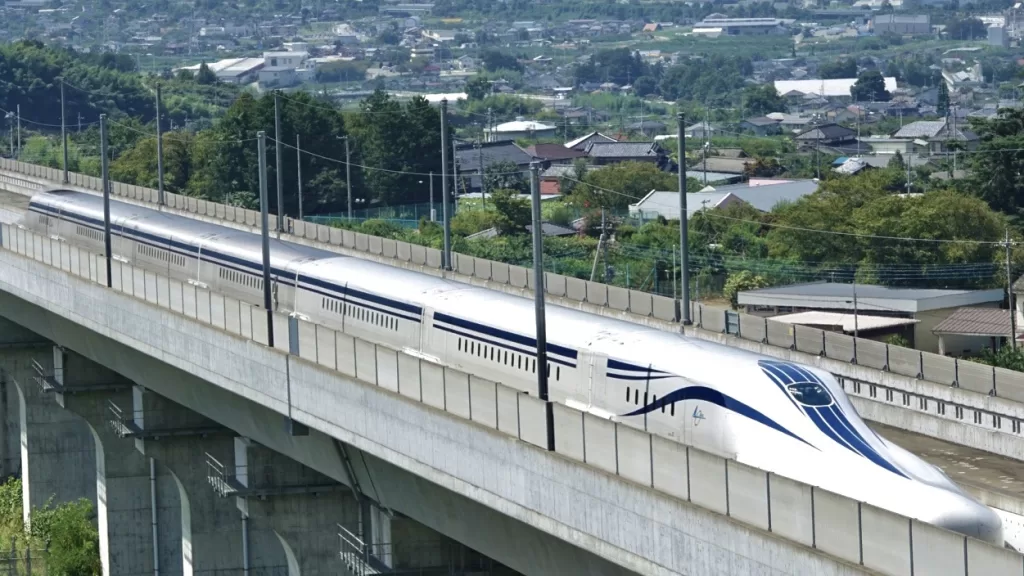
Topping the list is Japan’s record-shattering L0 Series maglev train. Maglev, short for magnetic levitation, uses powerful electromagnets to lift and propel the train above the track. Without friction, maglev trains can achieve remarkable speeds Smoothly gliding at up to 375 mph (603 km/h), the L0 Series is a transportation game-changer.
This experimental train is designed and tested by the Central Japan Railway Company (JR Central). In 2015, it set a world speed record for rail vehicles, blazing along at 603 km/h. JR Central plans to launch this train in 2027, connecting Tokyo and Osaka in 67 minutes flat. With a top operational speed of 505 km/h, it will be the world’s fastest passenger train service.
The L0 Series features exceptional acceleration, safety, and reliability. Its cutting-edge maglev technology promises a new era of ground transportation in Japan.
2. Fuxing Hao CR400AF/BF – China
Top Speed: 400 km/h (249 mph)
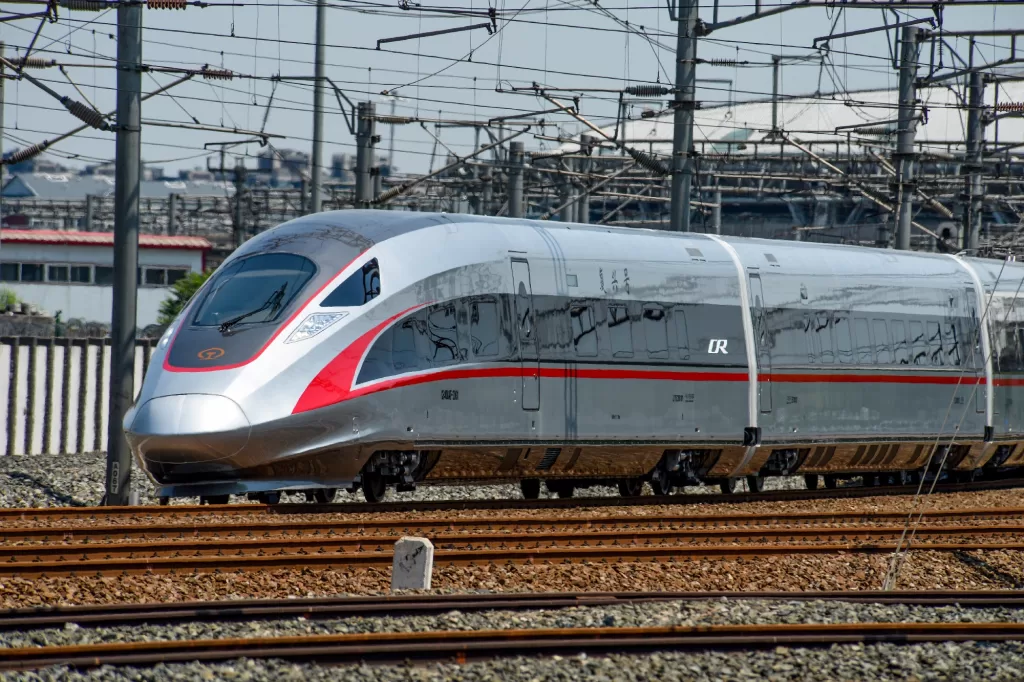
Chasing close behind at number 2 are China’s sleek Fuxing Hao bullet trains. Debuting in 2017, the CR400AF and CR400BF models currently hold the record for world’s fastest conventional high-speed trains in operation.
Built by state-owned CRRC Corporation, the “Blue Dolphin” and “Golden Phoenix” Fuxing trains sport an ultramodern design optimized for speed and efficiency. Capable of reaching 249 mph (400 km/h), they glide smoothly at 215 mph (350 km/h) in daily service on routes like Beijing-Shanghai.
The lightweight aluminum-bodied trains accelerate rapidly, using sophisticated sensing and automation. Onboard, passengers enjoy free WiFi, charging, and a comfortable ride. As a testament to China’s expertise in high-speed rail, the Fuxing trains demonstrate powerful engineering and innovation.
3. Shanghai Maglev – China
Top Speed: 431 km/h (268 mph)
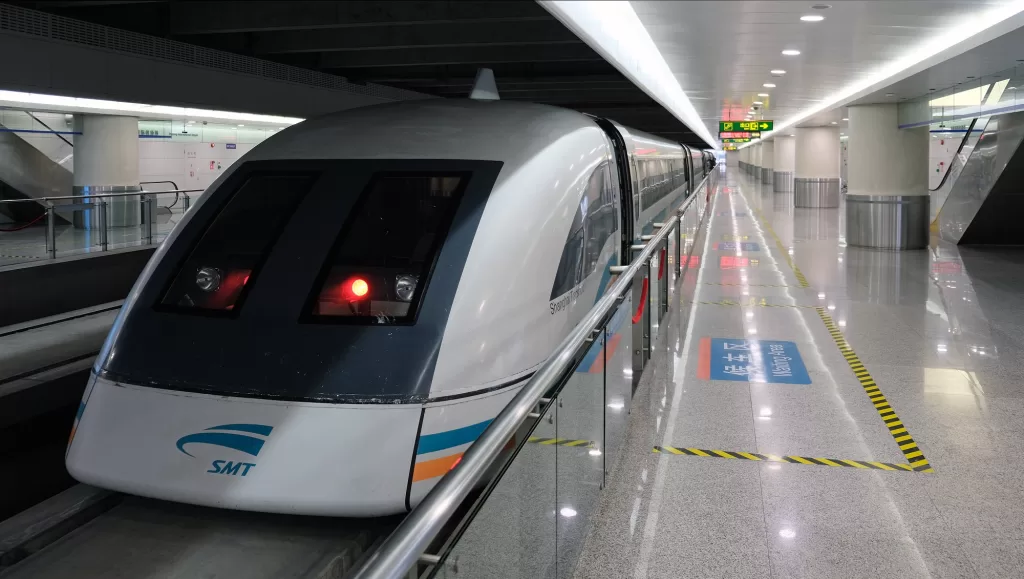
The Shanghai Maglev is China’s pioneering high-speed maglev (magnetic levitation) system connecting Shanghai’s Pudong Airport and metro station. Hurtling at 268 mph (431 km/h), it is the fastest commercial train in operation.
This 30 km demonstration line opened in 2004 as the first commercial maglev system internationally. Floating on a magnetic cushion just millimeters above the guideway, the train achieves incredible speeds smoothly and quietly. The 8-minute trip cuts commute time dramatically.
The Shanghai Maglev reaches a jaw-dropping top speed of 268 mph, with an average operating speed of 150 mph (241 km/h). Its technology could reshape urban transportation in the future.
4. Harmony CRH380A – China
Top Speed: 486 km/h (302 mph)
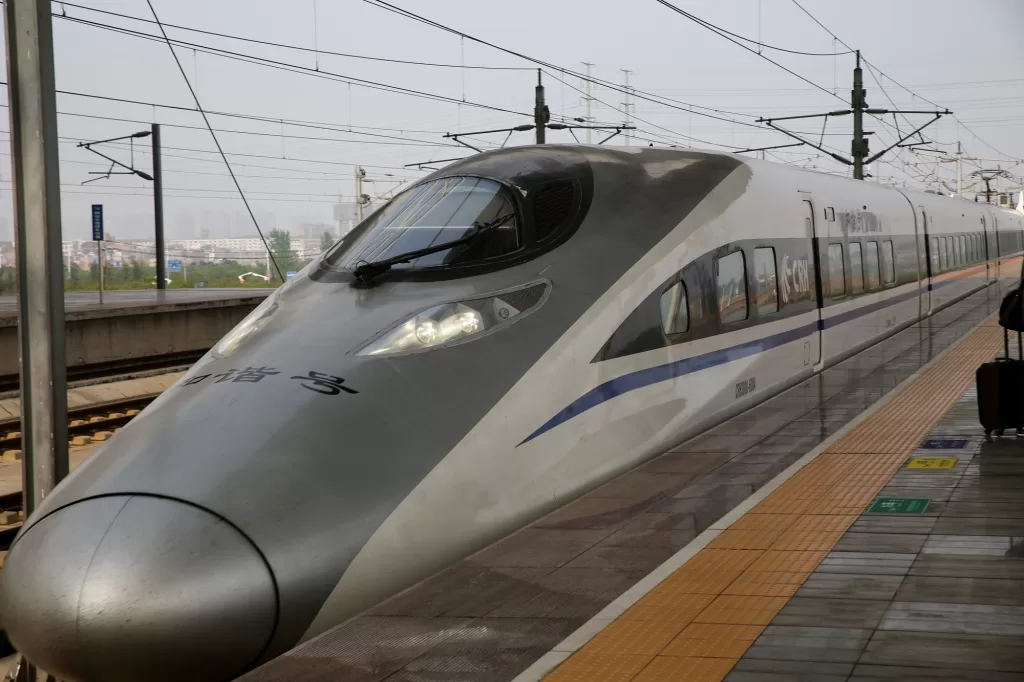
The Harmony CRH380A is a Chinese high-speed electric multiple unit train operated by China Railway High-speed (CRH). Introduced in 2010, it set a record by reaching 302 mph (486 km/h) during a test run.
Capable of hitting 236 mph (380 km/h) in service, the streamlined CRH380A currently runs routes like Beijing-Shanghai and Wuhan-Guangzhou. It accelerates rapidly, reaching 217 mph (350 km/h) in under 5 minutes. Onboard amenities like large windows, leather seats, and free WiFi ensure a comfortable ride.
Equipped with exceptional technologies, the Harmony bullet train demonstrates China’s excellence in high-speed rail engineering. It also highlights growing competition between countries to build ever-faster trains.
5. AGV Italo – Italy
Top Speed: 360 km/h (224 mph)
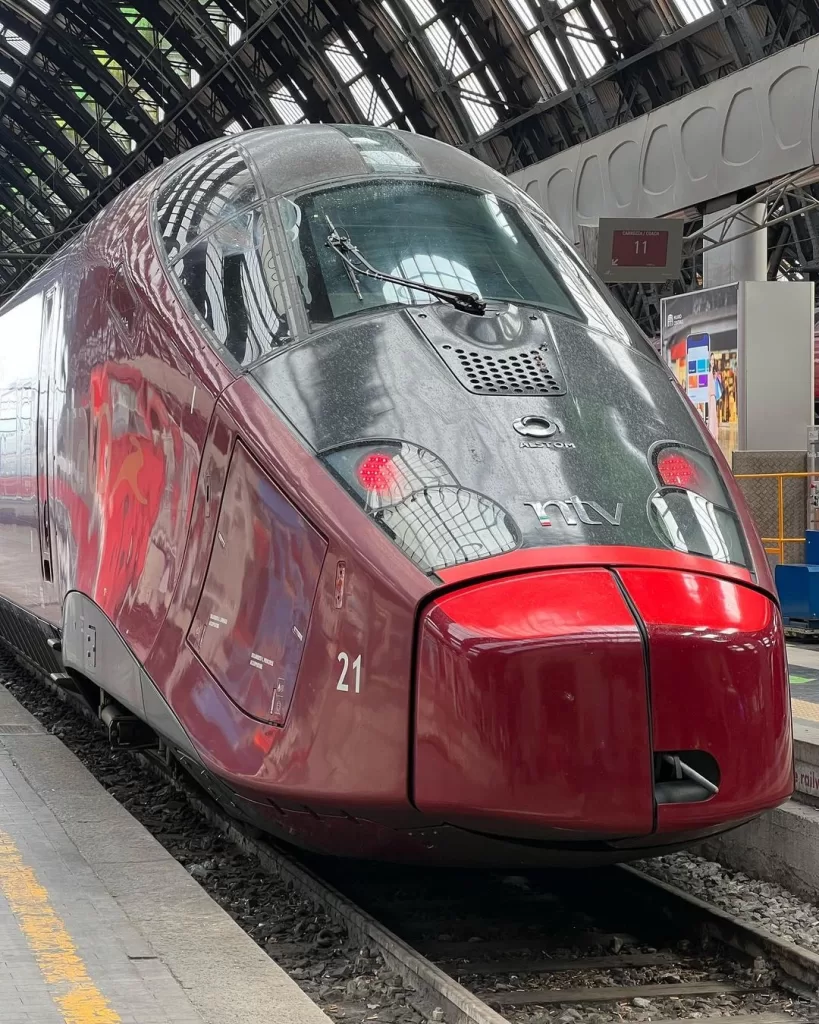
Hitting over 223 mph (360 km/h) during testing, Italy’s AGV Italo trains by NTV took the speed record for rail vehicles in Europe. The sleek white trains entered commercial service in 2012 as the fastest in Europe, operating at 217 mph (350 km/h).
Built by Alstom, the AGV Italo provides a high-tech travel experience onboard. Features like live TV, wi-fi, reclining leather seats, and wheelchair accessibility ensure a comfortable journey between city pairs like Rome-Naples. With distributed traction and articulated architecture, the train glides at ease.
Capable of a service speed of 224 mph (360 km/h), Italo trains promise travelers both speed and innovation. As a demonstration of Italy’s advanced engineering, these record-breaking trains take high-speed rail travel to the next level.
6. Euroduplex TGV – France/Morocco
Top Speed: 320 km/h (200 mph)
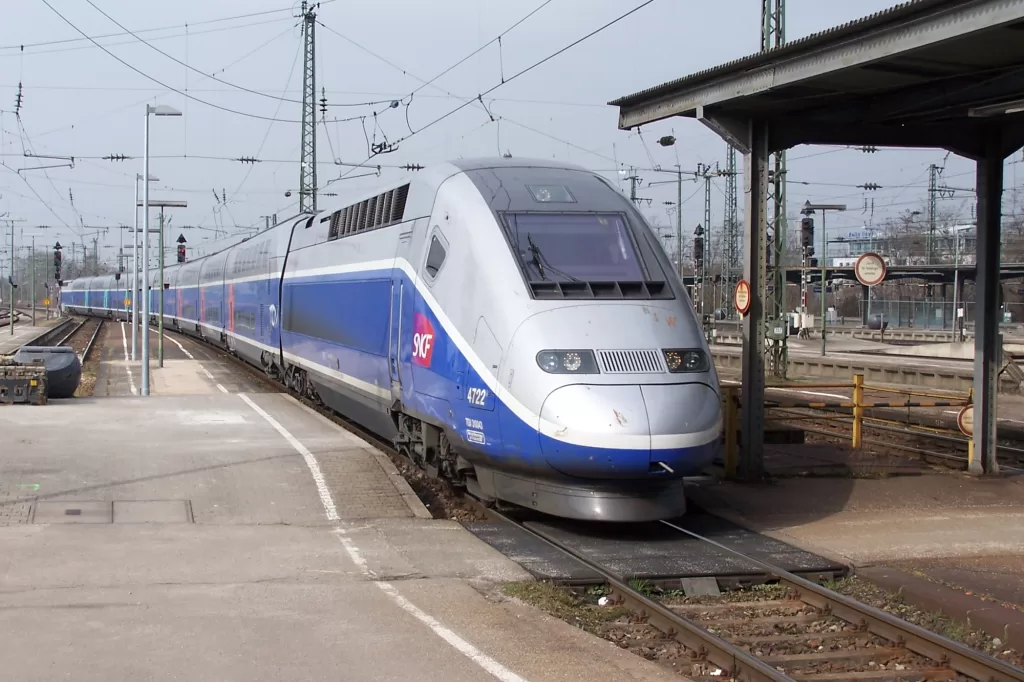
The double-decker TGV Euroduplex is France’s fastest double-deck high-speed train. Operated by SNCF, it reaches 200 mph (320 km/h) on routes connecting major French cities. The articulated sets reduce vibration for a smooth and quiet ride.
The Euroduplex serves international routes like Paris-Milan as well. In 2018, Morocco launched Africa’s first high-speed rail service with Euroduplex trains modified for desert conditions. Linking Casablanca and Tangier in just over 2 hours, it provides an important travel connection.
With 40% more capacity than single deck TGVs, the Euroduplex allows SNCF to transport more passengers. It builds on TGV’s decades-long legacy revolutionizing high-speed rail since 1981.
7. E5 Series Shinkansen – Japan
Top Speed: 320 km/h (199 mph)
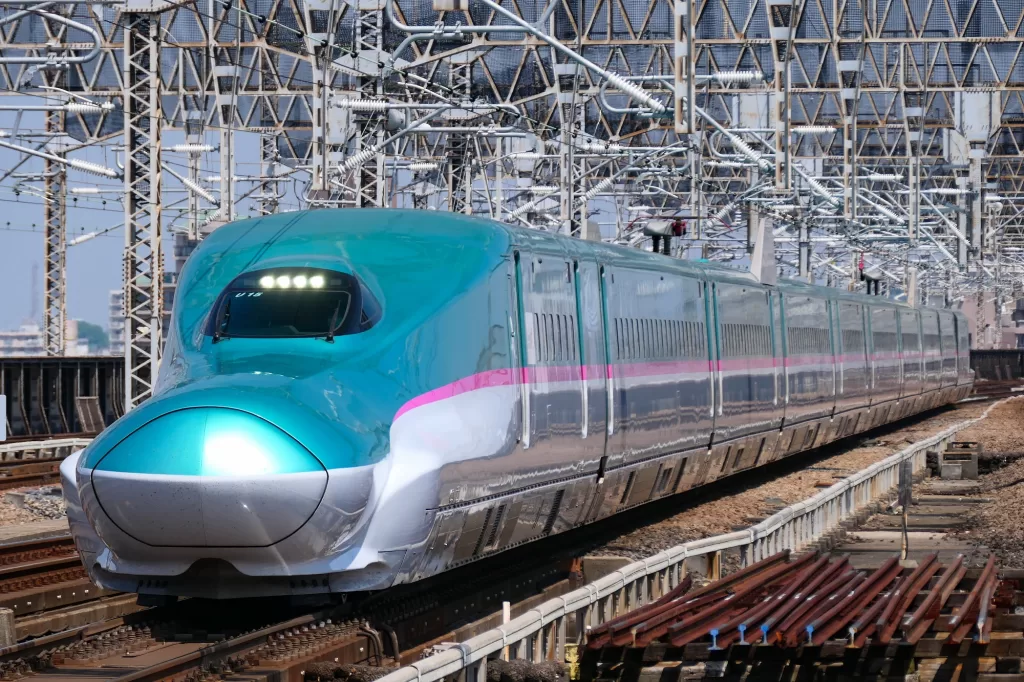
On Japan’s flagship high-speed line, the Tohoku Shinkansen, E5 series trains travel at up to 320 km/h. Jointly manufactured by Hitachi and Kawasaki Heavy Industries, these sleek bullet trains are the fastest operating in Japan.
The 15-meter long nose on the E5 Shinkansen helps reduce tunnel boom when entering at high speeds. Active suspension provides excellent stability and smoothness at velocity. Onboard, three classes of comfortable seating serve business and leisure travelers.
The Hayabusa and Hayate services operated by these trains connect Tokyo and Aomori in about 3 hours. Covering 713 km on the Tohoku Shinkansen Line, the E5 series trains maintain the Shinkansen’s reputation for speed, comfort, and safety. They demonstrate Japan’s ongoing commitment to high-speed rail.
8. Siemens Velaro – Europe
Top Speed: 350 km/h (217 mph)
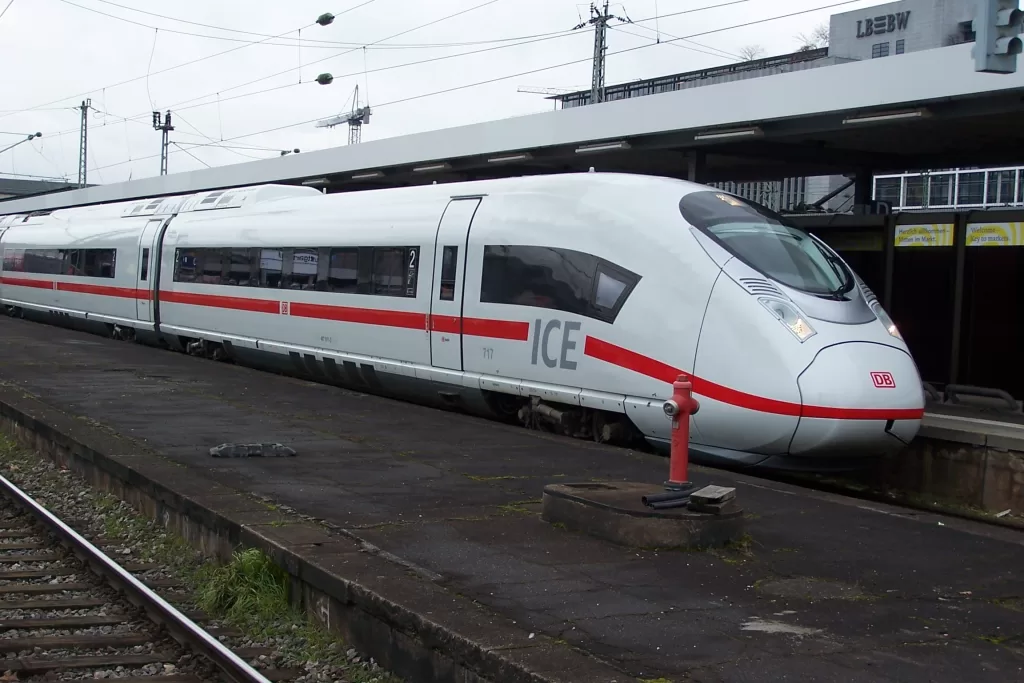
The Siemens Velaro operates high-speed rail networks across Europe, including Spain, France, Germany, and Russia. It reaches speeds up to 350 km/h using cutting-edge Siemens technology.
The Velaro E in Spain covers 621 km between Barcelona and Madrid in 2.5 hours. The Eurostar e320 links London and Paris through the Channel Tunnel at 200 mph. ICE3 trains whisk passengers across Germany at 205 mph (330 km/h).
Shared standards and flexible design make the Velaro ideal for cross-border rail services in the EU. Its distributed traction and articulated bogies deliver a smooth, quiet ride at velocity. With advanced engineering and speed capabilities, the Velaro series dominates European high-speed rails.
9. N700S Shinkansen – Japan
Top Speed: 360 km/h (224 mph)

The N700S Shinkansen is Japan’s brand-new bullet train on the Tokaido Shinkansen line. Featuring groundbreaking technology, it debuted in 2020 as the flagship of comfort and innovation. With a maximum speed of 220 mph (360 km/h), it currently operates at up to 180 mph (300 km/h).
Unique features include lithium-ion battery backup power and suspension advancements. The N700S accelerates and decelerates more smoothly than previous trains. Its intelligent braking system optimizes energy efficiency as well.
Onboard, passengers experience luxury reclining seats, Wi-Fi access, and power outlets. As Japan’s latest record-breaking Shinkansen model, the N700S heralds a new generation of high-speed rail travel.
10. KTX High-speed Train – South Korea
Top Speed: 305 km/h (190 mph)
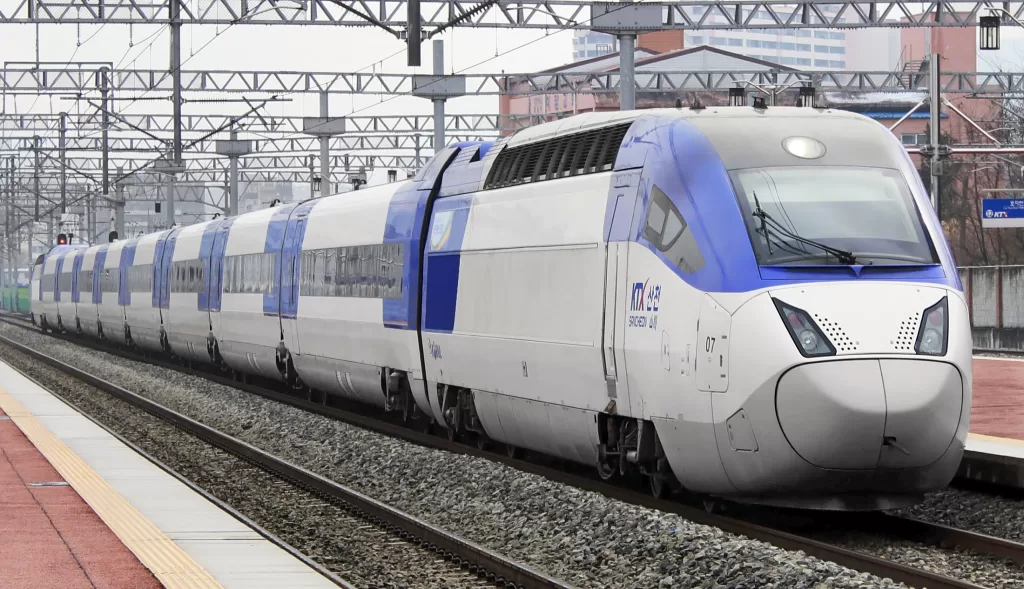
South Korea is home to the KTX high-speed railway stretching 412 km from Seoul to Busan. Operated by Korail, the Korea Train eXpress offers two train models – KTX-I and KTX Sancheon.
The KTX-I debuted in 2004 based on Alstom’s TGV technology. Since 2010, the KTX Sancheon has been operating with fully Korean technologies and design.
Reaching speeds up to 190 mph (305 km/h), the lightweight aluminum-bodied KTX trains provide efficient, smooth journeys between cities. Cutting the Seoul-Busan travel time to 2 hours 40 minutes, the KTX demonstrates South Korea’s high-speed rail capabilities.
As the fastest trains in South Korea, the KTX services will continue advancing with the rollout of the new “Smart KTX” models in 2025.
Here are 3 more of the fastest high-speed trains in the world:
11. Talgo 350 – Spain
Top Speed: 330 km/h (205 mph)
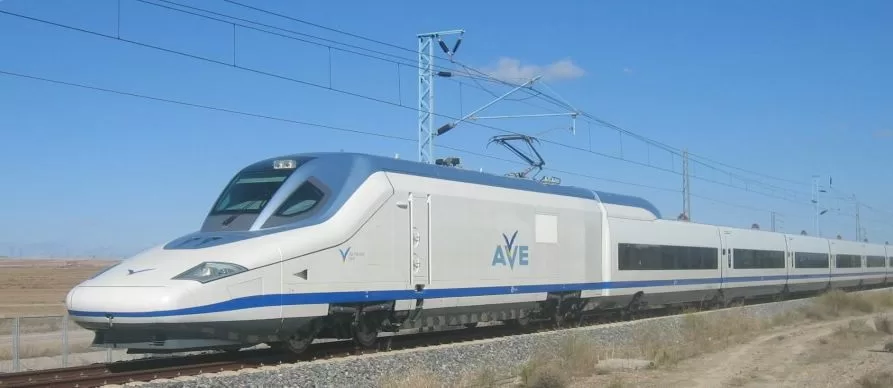
The Talgo 350 is a high-speed train operated by Spain’s national railways Renfe. Nicknamed ‘Pato’ (duck) for its unique nose design, it reaches speeds up to 330 km/h (205 mph).
Built by Patentes Talgo S.L., the Talgo 350 uses lightweight materials and independent wheel technology instead of bogies. This articulated design provides a smooth and stable ride at high velocity. The train accelerates rapidly due to its excellent power-to-weight ratio.
In service since 2005, the Talgo 350 serves major routes like Madrid–Barcelona on the busy Madrid–Barcelona high-speed rail line. In 2012, it set a world record for the longest uninterrupted high-speed journey, covering 1,628 km between Madrid and Malaga. With its optimized aerodynamics and reliability at high speeds, the Talgo 350 has become a symbol of speed and efficiency in Spanish rail transport.
12. ICE 3 – Germany
Top Speed: 330 km/h (205 mph)
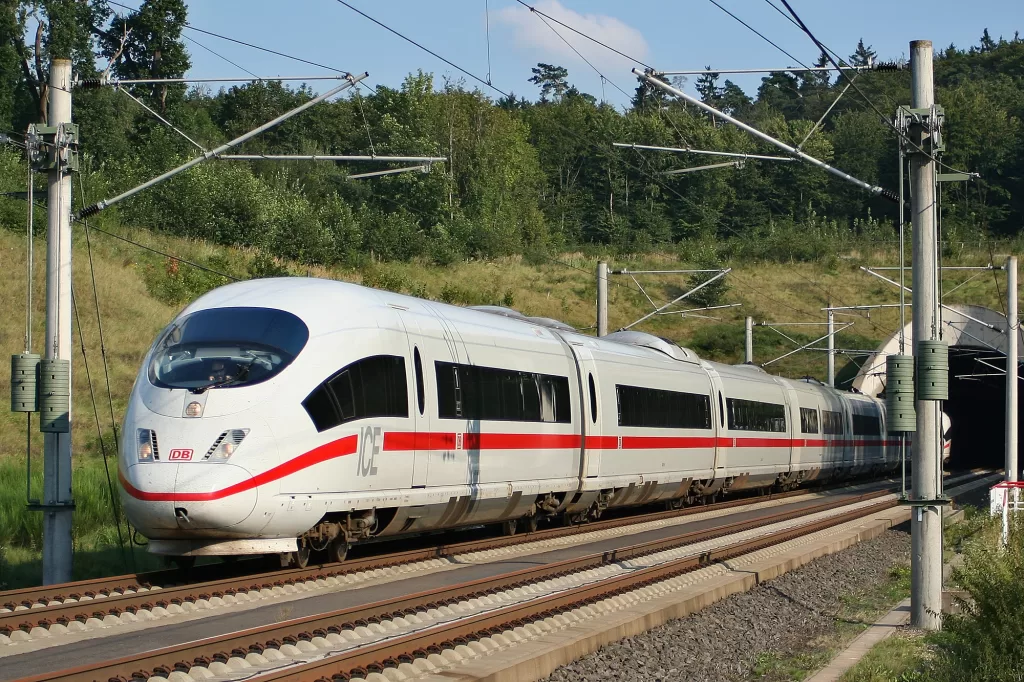
The Intercity-Express 3, or ICE 3, is the flagship high-speed train of Deutsche Bahn, Germany’s national railway company. Capable of hitting 330 km/h (205 mph) in regular operation, it is the fastest train series in Germany.
Jointly produced by Siemens and Bombardier, the ICE 3 utilizes advanced technologies for traction and suspension. Power cars at each end provide exceptional acceleration and velocity on the interconnected German Intercity-Express network. Sophisticated braking systems also allow smooth, rapid deceleration from top speeds.
Inside, the distributed traction motors and articulated bogies make for an ultra-smooth and quiet ride. Passengers enjoy onboard amenities including entertainment systems, comfortable seating, and onboard WiFi. Connecting cities like Berlin, Frankfurt, Cologne, and Munich in just a few hours, the cutting-edge ICE 3 has redefined high-speed rail travel in Germany since its introduction in 2000.
13. AVE Class 103 – Spain
Top Speed: 350 km/h (217 mph)
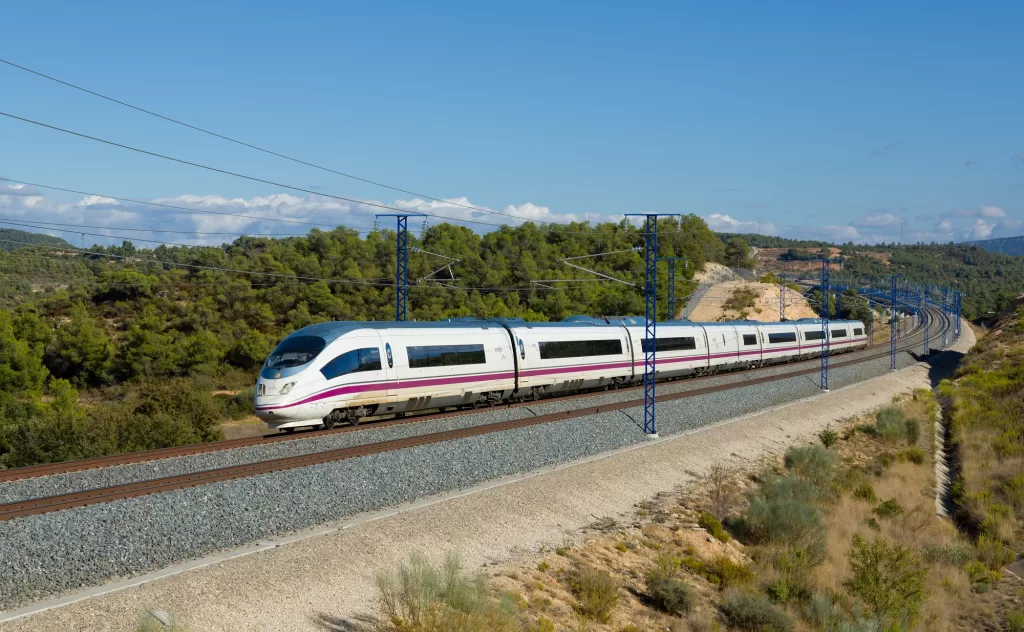
Operated by Spain’s national rail service Renfe, the AVE Class 103 is the country’s premier high-speed train. The Class 103, also known as the Series 103 or Siemens Velaro E, is specially designed for the long-distance routes of Spain’s AVE network.
During testing by Renfe in 2006, the streamlined AVE 103 reached a top speed of 356 km/h (221 mph) – a record for Spain. In commercial service, its normal maximum is 350 km/h (217 mph), making it the fastest train in the country. The Class 103 provides connections between major cities like Barcelona and Madrid in just 2 hours 30 minutes.
Built by Siemens based on the German ICE 3 platform, the AVE 103 is designed for high reliability and efficiency at extreme velocities. Capable of rapid acceleration, it provides fast, comfortable journeys aboard Spain’s modern high-speed rail network. With 26 trainsets in service, the record-breaking AVE 103 is the elite of Spain’s AVE fleet.
In summary, as rail technology progresses worldwide, high-speed trains keep achieving new heights of velocity, efficiency, and reliability. Countries continue pushing speed limits with maglevs, cutting-edge engineering, and streamlined designs. Racing into the future, these lightning-fast trains prove the massive potential of ground transportation. All aboard for the ride of a lifetime!